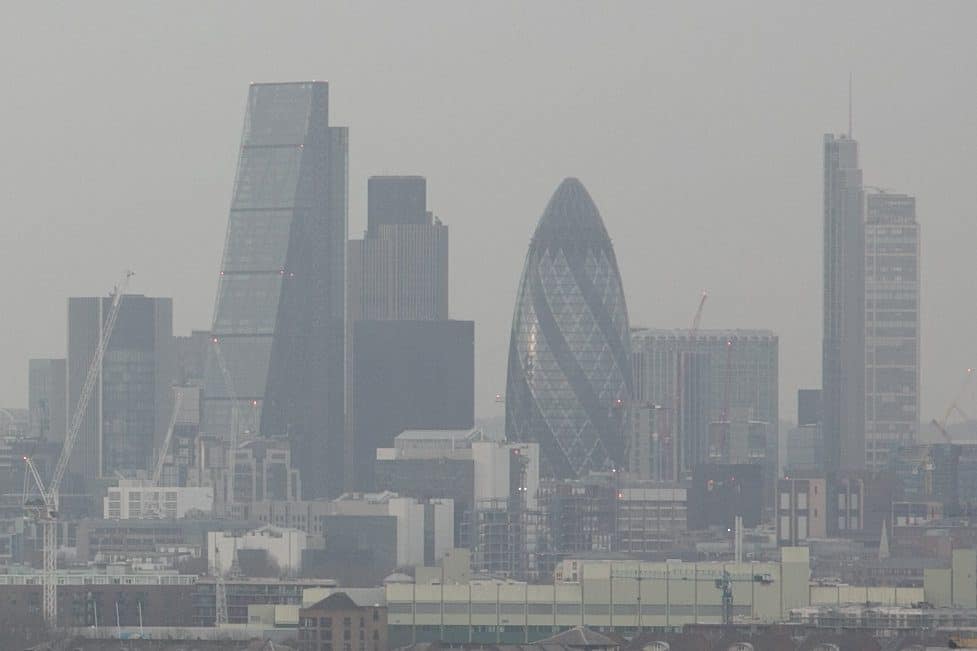
Credit;SWNS
Greenhouse gas emissions need to be slashed by more than seven per cent a year for the next decade to avoid “climate disaster,” warns a new study.
The figure is four times more than original predictions – and is due to governments failing to address the urgency of the crisis, according to international experts.
They say it would enable the world to stay within the 1.5C ceiling on temperature rises scientists say is necessary to avoid disastrous consequences.
Corresponding author Professor Niklas Hohne, of the NewClimate (correct) Institute in Germany, said: “Had serious climate action begun in 2010, the cuts required to meet the emissions levels for 2 °C would have been around two per cent per year, on average, up to 2030.
“Instead, emissions increased. Consequently, the required cuts from 2020 are now more than seven per cent per year on average for 1.5C – close to three per cent for 2C.”
The time window for halving emissions has also narrowed from 30 years in 2010 to ten years for 1.5C and 25 years for 2C.
Prof Hohne said: “The gap is so huge governments, the private sector and communities need to switch into crisis mode, make their climate pledges more ambitious and focus on early and aggressive action.
“Otherwise, the Paris agreement’s long-term goals are out of reach. We do not
have another ten years.”
The 2015 accord committed countries to keeping rising global temperatures to well below 2C above pre-industrial levels and attempting to limit them to 1.5C.
The US has controversially begun the process of withdrawing – and will leave in
November.
Prof Hohne said: “Although many reports, scientists and policymakers continue to discuss rises of 2C, it must be emphasised that, in 2018, the Intergovernmental Panel on Climate Change reported warming of more than 1.5C would be disastrous.”
This would lead to the near-total extinction of coral reefs – and extreme weather around the world.
His team, which includes colleagues in the UK, say the situation is far worse than first feared owing to a “decade of insufficient political action on climate change.”
It means nations must now do “four times the work – or the same in one-third of the time – to comply with the pact,” they warned.
Prof Hohne said: “The past decade of political failure on climate change has cost us all dear. It has shrunk the time left for action by two-thirds.
“In 2010, the world thought it had 30 years to halve global emissions of greenhouse gases.
“Today, we know this must happen in ten years to minimise the effects of climate change. Incremental shifts that might once have been sufficient are no longer enough.”
The findings are based on pooling data from all ten editions of the Emissions Gap Report produced by the United Nations Environment Programme (UNEP).
Carbon dioxide emissions in 2018, also accounting for deforestation, rose to more than 55 gigatonnes – and have risen on average by 1.5 per cent a year for the past decade.
Each year UNEP has examined the difference between what individual countries have pledged and what they need to do collectively to do meet the goals.
Prof Hohne said: “Our analysis shows the gap has widened by as much as four times since 2010.”
The study published in prestigious British science journal Nature cited three key reasons.
It found global annual greenhouse-gas emissions increased by 14 per cent between 2008 and 2018 – meaning they now have to decline faster than was previously estimated.
It is cumulative emissions that determine the long-term temperature increase, explained the researchers.
The international community also agrees it must ensure a lower global temperature rise than it decided ten years ago – because climate risks are better understood.
And countries’ new promises have been insufficient. The tenth anniversary of the report coincides with the 2020 milestone to which countries agreed in Paris.
They undertook to communicate or update climate pledges – or ‘nationally determined contributions’ – to the UN Framework Convention on Climate Change conference this November in Glasgow.
Prof Hohne said: “Clearly, the promises must be overhauled – and then, crucially, kept – if the yawning gap between ‘talk and walk’ is going to close by 2030.”
The only time in recent history when emissions have fallen by around seven per cent in any country came during the collapse of the Soviet Union.
During the financial crisis and recession emissions in the US and Japan fell briefly by about six per cent – but soon rebounded.
But it’s hoped increasingly cheap technologies such as renewable energy and electric vehicles could enable deep cuts in without jeopardising economic growth.
There are pockets of hope that the escalating heatwaves, droughts and flooding across the globe can yet be halted.
Prof Huhne said: “The United Kingdom – together with 75 other parties – and California have at least set ambitious goals to become carbon neutral, which might send signals to industry even before supporting policies are implemented.
“Meanwhile, 26 banks have stopped directly financing new coal-fired power plants.”
He added: “Closing the gap will require scaling up these few success stories and mirroring them with progress in every sector.”
Latest estimates suggest the current pledges made by countries under the Paris agreement would cause temperature rises of an alarming 3.2C this century.